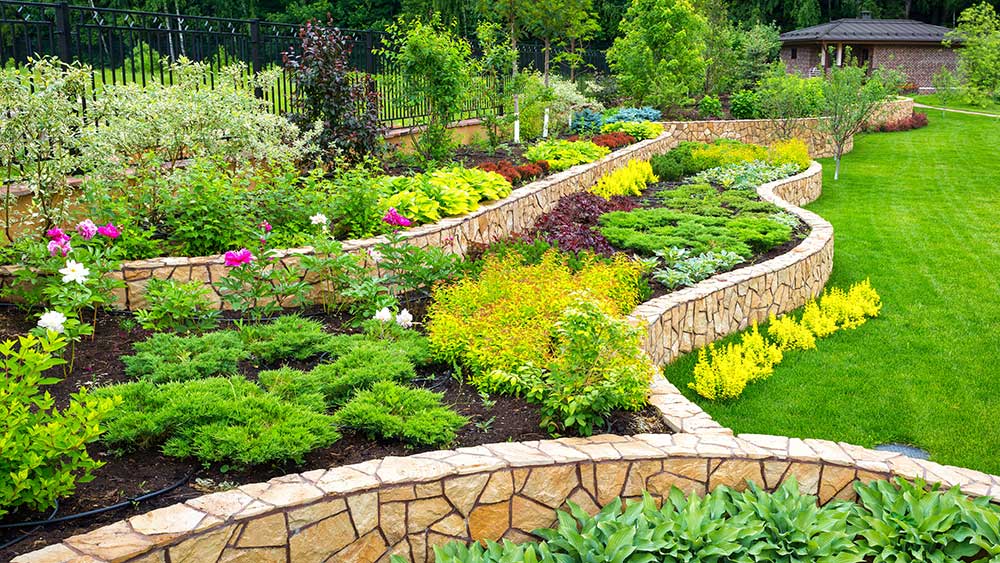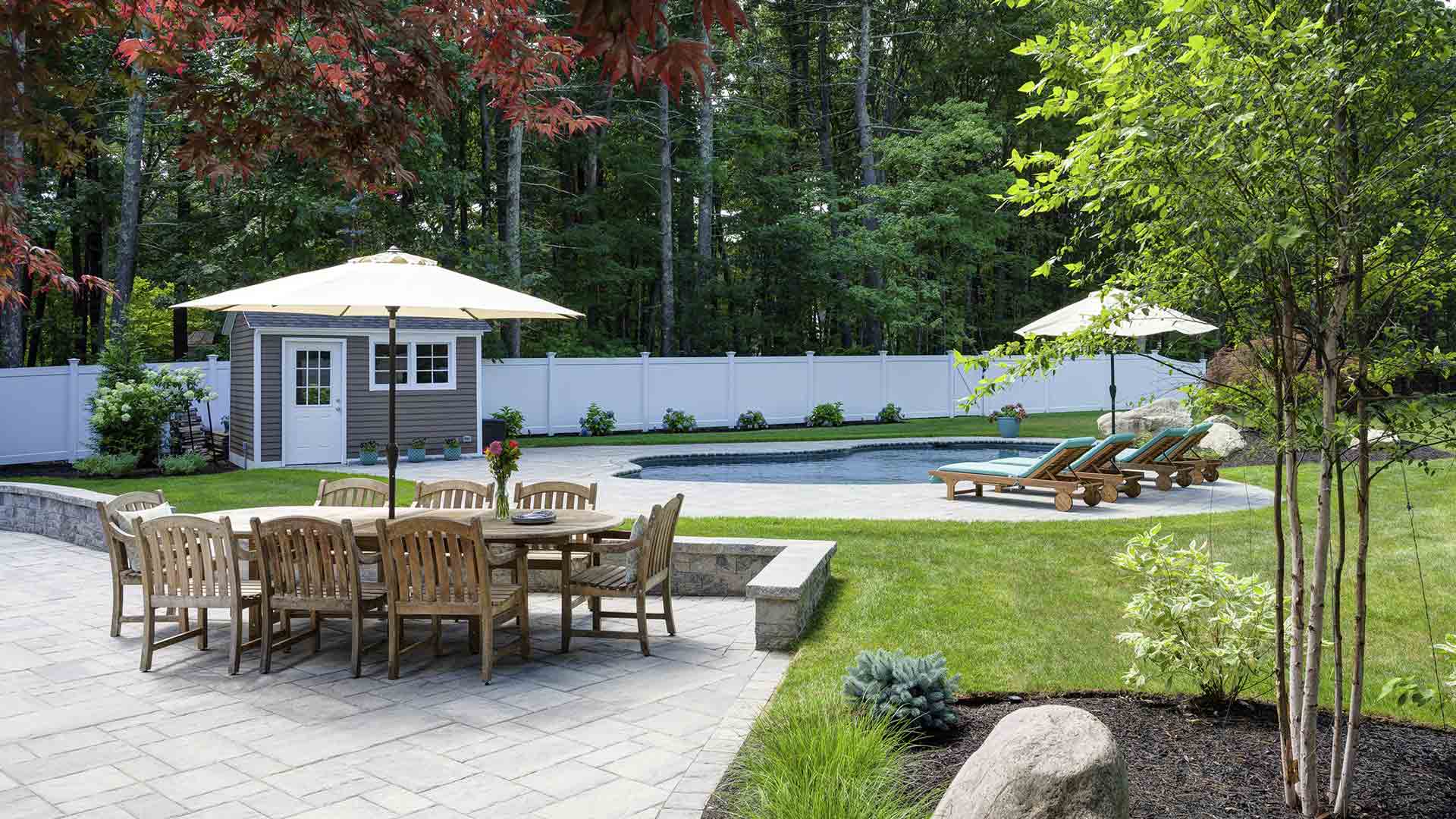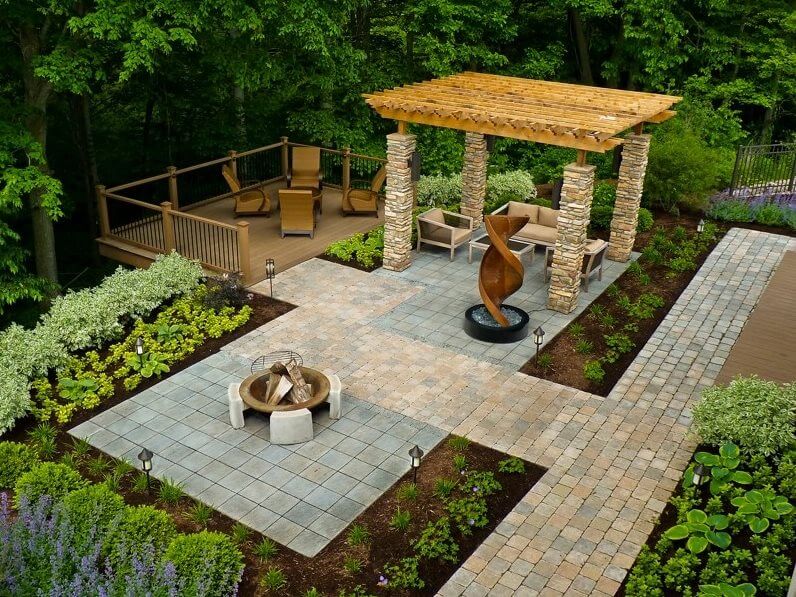The Best Guide To Landscapers
The Landscapers Diaries
Table of ContentsRumored Buzz on LandscapersThe Landscapers IdeasRumored Buzz on LandscapersThe Ultimate Guide To LandscapersThe 10-Second Trick For Landscapers
In the PNW there are semi-deciduous or semi-evergreen plants that might shed their leaves depending on how cold the winter months is. - A level event space, made of wood or composite product (made to look like wood), usually adjacent or affixed to a framework.

This is a natural process, and the result can be utilized for courses and patio areas. - Key landscape features being proposed in a landscape style plan.
Not known Details About Landscapers
These objectives assist the style process, not the designer's design or choices. Common design purposes in Rose city are low maintenance, drought forgiving, and animal friendly. - Refine for getting rid of or thinning the dead lower level of a fully grown yard. Thatch is turf that has passed away and gathered below the green blades.
Over time this layer can obtain really thick and make it challenging for water, sun, and nutrients to get to portions of the turf.- The procedure of gathering and regulating the flow of water on a property. This can be performed with grading, French drains pipes, dry wells, absorptive surfaces, sump pump, rainfall gardens, and a lot more.
- A slow-moving feeding irrigation system that uses adaptable tubing and emitters to send an accurate quantity of water to each plant. - The ability of a plant to make it through without much summer season water.
- A garden feature where water is stood for by an accumulated stone product, normally a crushed rock or granite. These are most commonly discovered in contemporary and Japanese yard design.- A stone or flagstone outdoor patio, course, or sidewalk built without a concrete base. The base would be compacted crushed rock and the joints would certainly be an accumulation or walkable ground cover.
The Facts About Landscapers Uncovered
- A rock keeping or free standing wall surface built without the use of mortar. - A below ground structure that accumulate water and allows it to reduce percolate into the dirt around it.
Landscape design that works with a websites' atmosphere in both look and sustainability without negative effects to the environment. Edging in the landscape is a line of separation that creates visual passion in the garden by dividing one sector from another section. This can be visual or functional, keeping one component (such as pea gravel) from obtaining combined into one more (like bark dirt).
Areas can also have a feeling of "room" supplied by trees, various other growings, fences, or screens. The landscape near the entry to a building. A tree, bush or creeping plant, educated to expand on a wall surface or fencing right into a specific pattern. Especially helpful for fruit trees, making it simple to gather the fruit and consisting of mess.
A plant that is not indigenous to the area helpful hints where it will certainly be grown. Thicker bladed turf lawn that spread out through rhizomes.: The level of dirt on your residential property prior to bark dirt or compost is spread out.
Landscapers Things To Know Before You Buy

The function, factor, or activity that an area is be landscaped for. Area for expanding plants for watching, eating, or physical activity.
Rock product, either rounded or fractured, that is reasonably tiny- usually 1" or less. Reduced plants that are permitted or urged to top an area. Can refer to any type of "tough" yard elements consisting of statuary or rocks but many frequently is made use of to describe paths, patios, and walls.: Height difference in between the degree of water in a pond (or the level of the pump if it sits outside the pond) and the upper outlet of water which impacts performance of the water pump in gph (gallons per hour). Dense bushes or trees that develop a fence, screen, or limit.

The Basic Principles Of Landscapers
An even more relaxed yard controlled by rounded as opposed to straight bed lines and a less stiff framework. Conventional PNW landscapes are casual. A plant that spreads more than wanted, visit this site or into habitats where it does damages. Portland has a listing of intrusive plants that should not be set up in landscapes due to the fact that they can spread to forests or rivers and be difficult to manage.
Can include head positionings and protection, pipe sizing, GPM specs, and products needed to mount this system. Certified professional that develops landscapes, schooled in engineering and architecture as well as in gardening.
The professional that prepares and creates landscape projects, normally at a residential or little industrial level with the major layout motivation on growings. Landscape developers usually have less schooling than Landscape Architects and are not certified. A finished landscape design, describing all components for the brand-new landscape. This usually takes the type of a drawing on paper.
A water tight HDPE material utilized beneath ponds, streams and waterfalls in water functions. Using lots of plantings of the exact same range to fill in a location in the landscape.